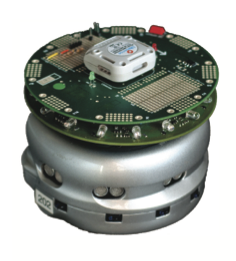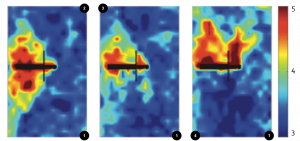
Ultra-wideband (UWB) is considered one of the most promising indoor positioning technologies currently available, especially due to its fine time resolution. Furthermore, wireless localization signals (in particular those relying on UWB) are able to penetrate through objects in non-line-of-sight (NLOS) scenarios due to their large frequency spectra. Yet, despite the technology’s otherwise desirable traits, such NLOS scenarios cause biases in the signal propagation times, which may ultimately lead to significant localization errors.
In this project, we aim to develop accurate and efficient localization methods for UWB time-difference-of-arrival signals. In this context, we will study the benefits of collaborative localization algorithms running on distribted systems and consider the fusion of relative observation data with UWB data. By addressing the peculiarties of UWB signals with creative solutions, we hope to mitigate the disadvantages of the method while harnessing its advantages.
Even though applications of localization systems are presumed to go well beyond robotic applications, a development platform based on mobile robots has been selected, among others because it allows repeatable measurements required for reliable performance evaluations. The ultimate goal of the project is to develop a system that allows a team of mobile robots to locate themselves with high precision (order of a few centimeters) and with high frequency (at least once per second).

Team and Collaborators
In collaboration with:
- Cyril Botteron
- Pierre-Andre Farine
- Alexander Feldmann
- Catherine Dehollain
- Stephane Robert
- Anja Skrivervik
Sponsors
National Center of Competence in Research:
Mobile Information & Communication Systems (NCCR MICS)
Related Student Projects
- DISAL-SU19: Lucas Gonon, An Efficient Ultra-Wideband TDOA Measurement Model
- DISAL-SP33: Dimitrios Chalikopoulos, Towards a Spatial Model of Ultra-Wideband Ranging Bias
- DISAL-SP36 : Rafael Mosberger, Collective Robot Localization: Information Merging and Sensor Fusion Strategies
- DISAL-IP13: Adrian Arfire, Experimental Evaluation of the Khepera III Robot Towards Navigation Research
- DISAL-SU18: Louis Saint-Raymond, Dynamic Object Tracking for Mobile Robot Localization
Publications
Please note that the publication lists from Infoscience integrated into the EPFL website, lab or people pages are frozen following the launch of the new version of platform. The owners of these pages are invited to recreate their publication list from Infoscience. For any assistance, please consult the Infoscience help or contact support.